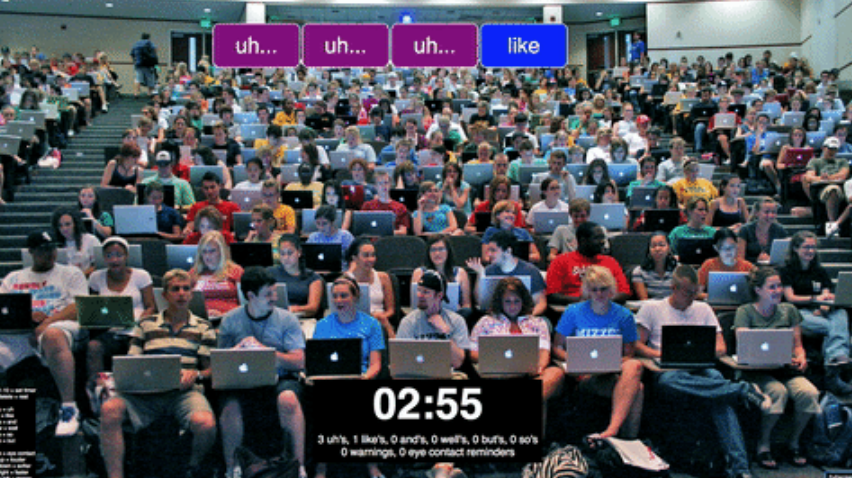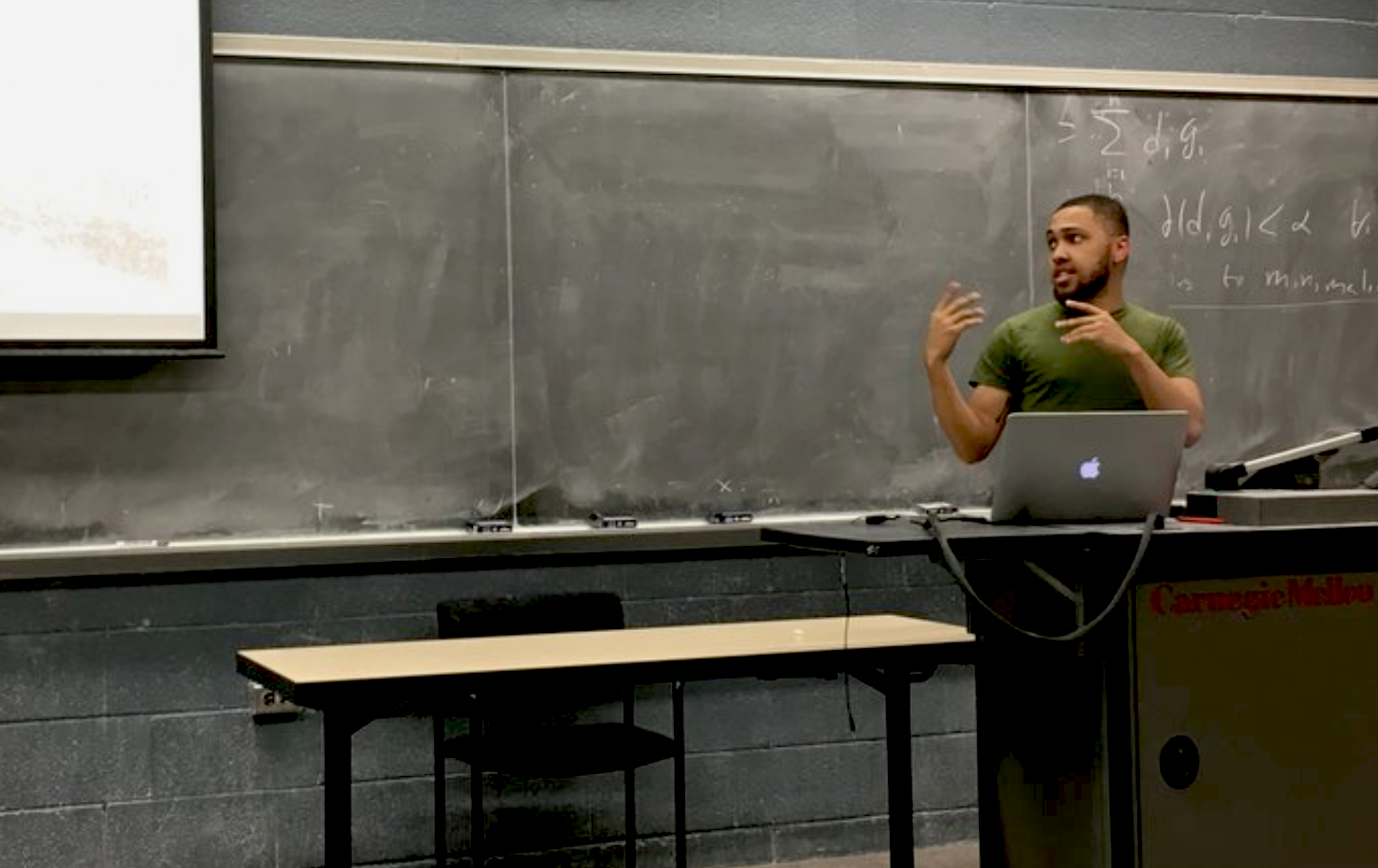- Hackathon
- Role playing
- Practice simulation
- Automatic feedback
- Peer feedback
- Campfire stories
We developed the most compelling of these concepts into eight high-level storyboards. Here is a selection of the ideas generated:
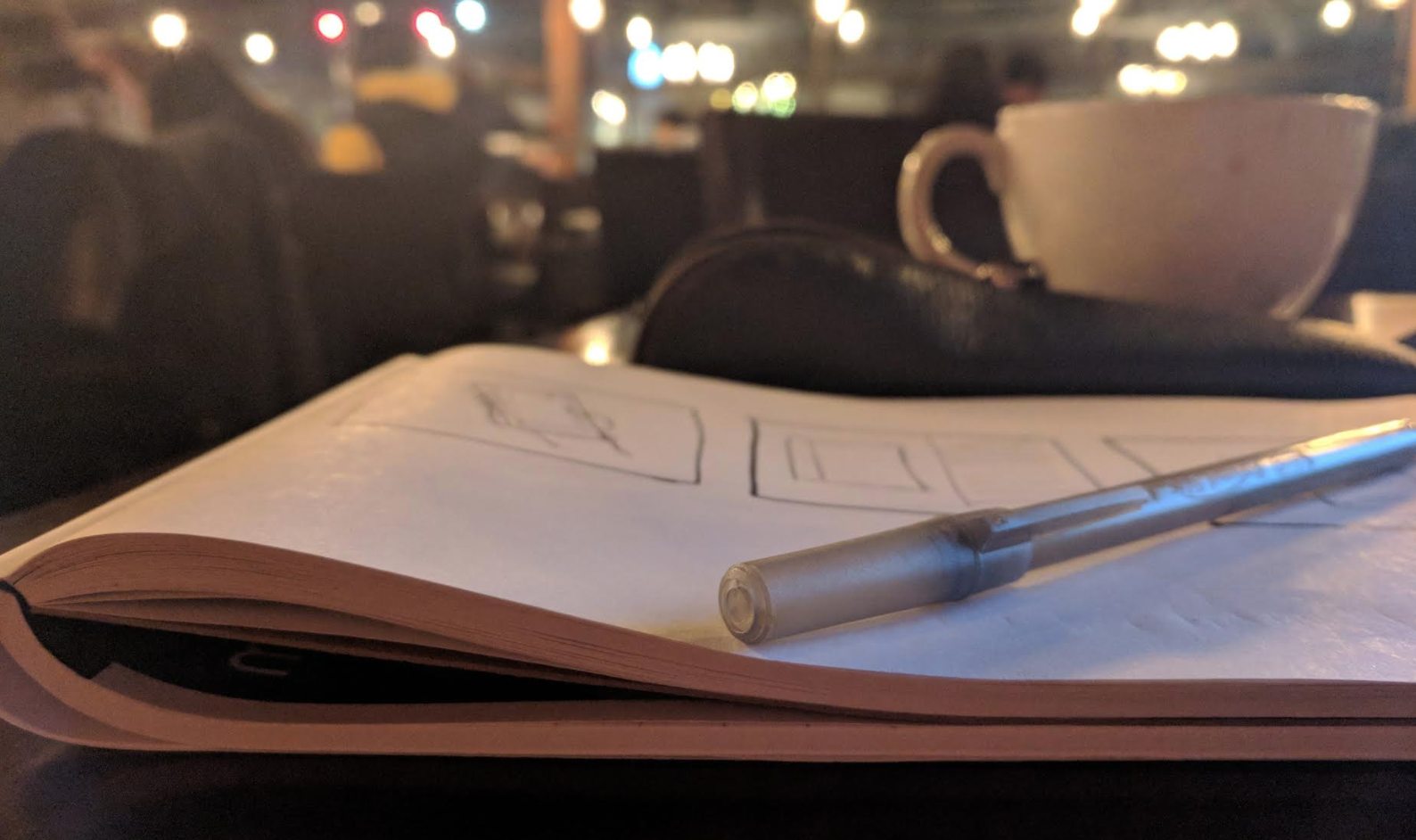




- Virtual reality: An exciting new medium
- Automated feedback: Quick turn-around, data visualization to track progress
- Multiple perspectives: A mix of crowd-sourced opinions that cover all bases
In addition to gathering feedback about preferred formats, the speed dating process also illuminated several values when it came to practicing presentations and receiving feedback:
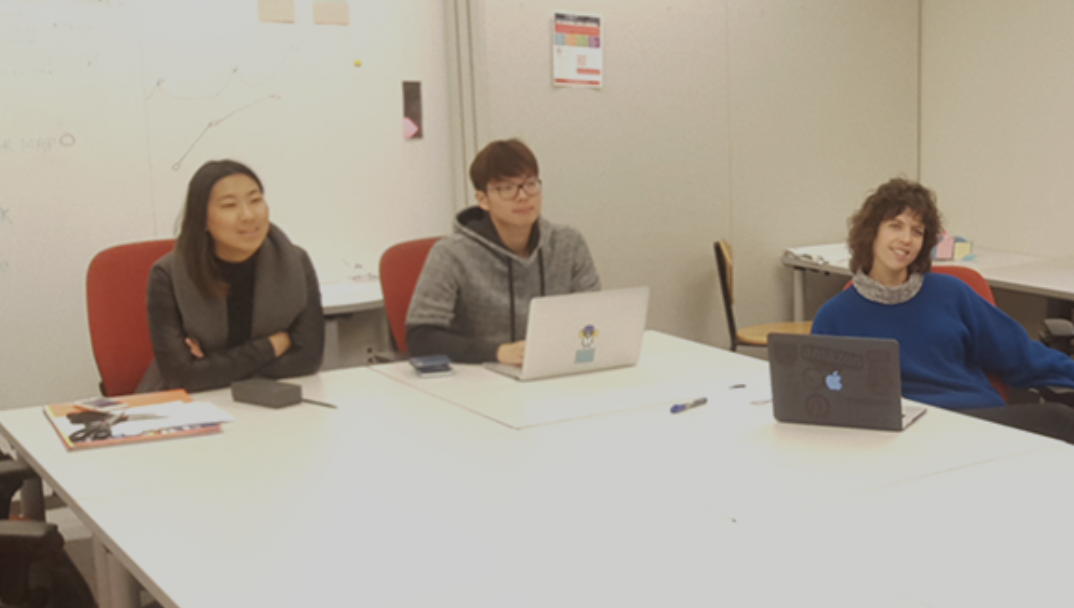
Low-level feedback is valuable
Although the benefits of high-level tips for plotting rhetorical strategy can't be overstated, alerting students to more technical painpoints like volume and eye contact still has a positive effect on improving their communication skills.Students need a solution that works around their schedules
Ideas that required significant time commitments and worked on structured schedules were less popular than those that could be accessed at anytime.Peer feedback was welcome as a complement to expert feedback
Students were interested in their peers' opinions, since they often shared the same curricular interests and could speak to the clarity of the presentation. Educators also agreed that engagement in a communication skills critique provoked an increased awareness in a student's own speaking style.As a result, we decided to move forward on a concept that would both allow students to practice on their own time and automatically generate feedback. To retain valuable human input, this concept would work in conjunction with an in-class format that supported crowdsourced peer feedback through a low-friction survey, as well as opportunities for expert feedback from educators.
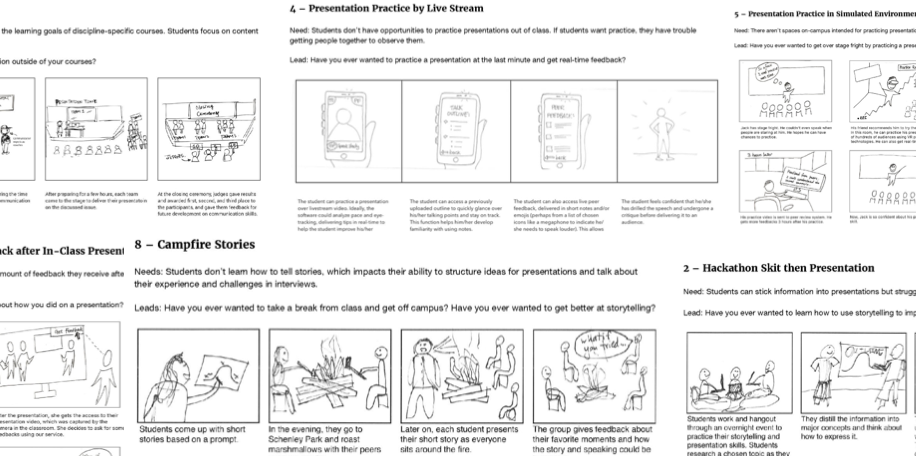
We prototyped the practice room experience and the in-class feedback scenario
with six students, briefing them on the simulation first and asking
them to think of a topic. Then they presented while we recorded metrics and critique.
We quickly entered this data into a mocked-up feedback report for the participants, then discussed
the experience.
